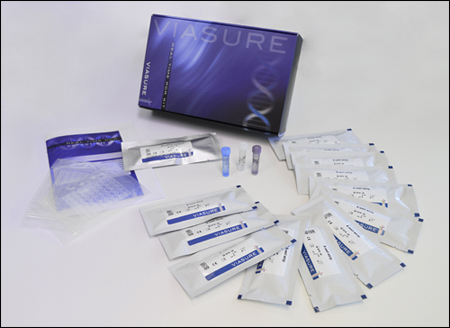
VIASURE Real Time PCR Detection Kits
Parainfluenza (1, 3 & 2, 4)

Description
VIASURE Parainfluenza Real Time PCR Detection Kit is designed for the specific identification and differentiation of Parainfluenza 1, Parainfluenza 2, Parainfluenza 3 and/or Parainfluenza 4 in clinical samples from patients with signs and symptoms of respiratory infection.
This test is intended for use as an aid in the diagnosis of Parainfluenzas viruses in combination with clinical and epidemiological risk factors.
RNA is extracted from clinical specimens, multiplied using Real Time amplification and detected using fluorescent reporter dye probes specific for Parainfluenza 1, Parainfluenza 2, Parainfluenza 3 and Parainfluenza 4.
Specifications
Information
Parainfluenza viruses (PIV or HPIV in humans) belong to the Paramyxoviridae family and are divided genetically and antigenically into 4 types. All of them can cause respiratory infections in infants, children, and adults; although the location of the infection and some symptoms depend on the type. HPIV-1 and HPIV-2 both cause upper and lower respiratory illness, such as cold and croup, with HPIV-1 most often identified in children. HPIV-3 is more often associated with lower illness (bronchiolitis, bronchitis, and pneumonia) and HPIV-4 is recognized less often but may cause mild to severe respiratory illnesses. Most often, they aren’t severe enough to cause concern in healthy adults; however, they can be life-threatening in infants, the immunocompromised patients, the chronically ill, and the elderly.
HPIV usually spread from an infected person to others through the air by coughing and sneezing, close personal contact or touching objects or surfaces that have HIPV on them and then touching their mouth, nose, or eyes. After you get infected, it takes about 2 to 7 days before you develop symptoms.
Parainfluenza are medium size enveloped virus and their genomes are organized on a single negative-sense strand of RNA that encodes at least six common structural proteins. These viruses carry two envelope glycoproteins: HN containing both haemagglutinin and neuraminidase activity and F carrying fusion activity.
Viral culture in combination with immunofluorescence is the traditional method for diagnosis but it is timeconsuming. Antigen detection test are widely used but they are less sensitive and specific than other diagnostics tools such as Real-time PCR assays, which currently are being considered one of the best method of choice.

